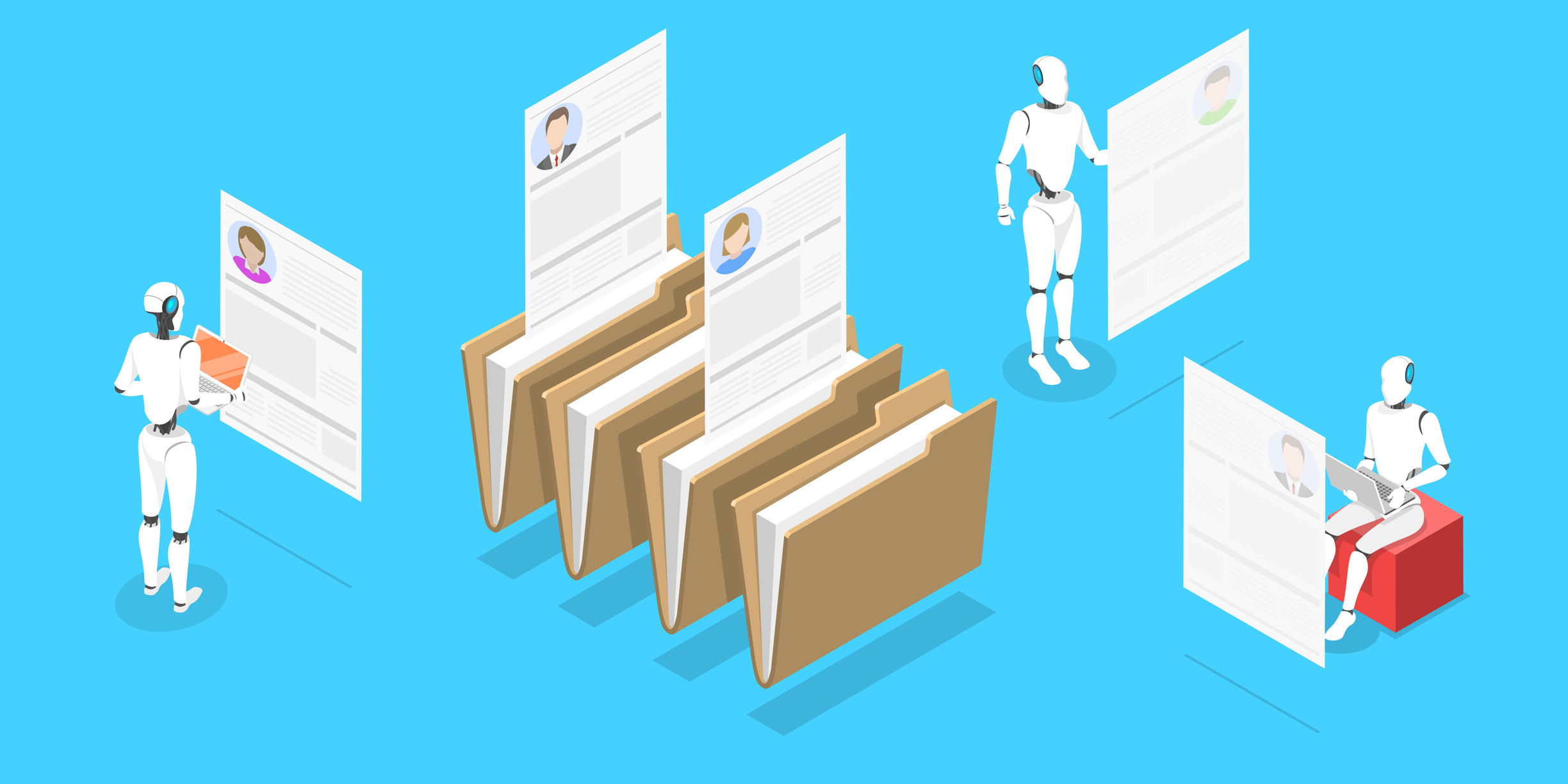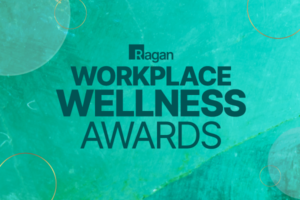What ChatGPT and other generative AI tools mean for HR teams
Will ChatGPT or other generative AI tools be coming for your HR job? The short answer is … no.

For the last two months, ChatGPT has taken the internet by storm. You can’t browse Instagram or Facebook without seeing a demonstration of something ChatGPT did to amaze a new user: write a stock trading program, complete an AP English essay, or create a science-based workout program. Hundreds of journalists have hypothesized its implications since ChatGPT emerged in November. And AI has been slowly integrating into companies for a number of years. A recent study by IBM in May 2022 estimated that 35 percent of companies have adopted AI to serve their organizations, and 44 percent are working right now to “embed AI into current applications and processes.”
What does this mean for HR leaders and teams? Will ChatGPT or other generative AI tools be coming for your HR job? The short answer is … no. ChatGPT or other tools like it will not eliminate HR positions — in fact, when used correctly and with the right guidance, it can transform HR organizations and each HR position to be far more productive, efficient, and free HR teams up to do more strategic, value-added work. Here are five emerging uses to be aware of, and how to begin exploring their feasibility with your departmental leadership peers:
[RELATED: Join us Aug. 14-16 in Denver for our Workplace Wellness Conference]
Content creation, like job descriptions or competency guides: Generative AI tools like ChatGPT are trained using the collective body of the internet, including existing job descriptions, competency definitions, and more. Rather than having recruiting teams or hiring managers spend their time creating these from scratch, ChatGPT can be used to get a first draft in place, which can be edited from there. Like any program, its effectiveness depends on how specific your request is and how well you articulate the needs. For example:
- I have a client looking to hire a senior technical recruiter. Initially, I just asked ChatGPT to write a job description for that role. I received a quick paragraph that wasn’t really useful. But when I asked ChatGPT to write me a 500-word job description including the industry the client was in, the city they are located, and specified it needed to include responsibilities and required competencies, I received a first draft that was 70-80 percent of the way there.
- I asked ChatGPT to write a competency guide for engineers. It gave me four competencies: technical skills, communication, teamwork and problem-solving. When I was more specific and asked ChatGPT to write a 1,000-word competency guide with at least five competencies, include the proper programming languages, and the expectations at the associate, career, and senior engineer levels, I received a more robust response. It was still only 50-60 percent of the way there, but just the fact I was able to nearly instantaneously create this starting point is impressive.
Benchmarking information (e.g., salary ranges, benefits offerings, etc.). As salary transparency continues to take root, and as companies continue to detail out their benefits offerings (including costs on company extranets), expect to see the accuracy of tools like ChatGPT or other AI aggregators improve. For now, a professional survey provider will spit out better information than ChatGPT, but both are directionally accurate.
For example, I asked ChatGPT to estimate the salary range of an HR Director in Los Angeles for a $1-3 billion technology firm. It was slightly low compared to survey data and my own experience. I also asked what the common medical benefits sharing ratios are for similarly sized firms across the United States; it responded that 70 to 80 percent of costs are covered by the company and 20 to 30 percent by the employer is the “common arrangement.” This varies widely based on a series of factors it detailed for me. (ChatGPT was right on both accounts.) For start-ups that can’t afford the benchmarking data or just need some directional information, this may be a good first reference point.
Automation of HR tasks and employee self-service. As HR teams are continually asked to do more with less, tools like ChatGPT can be utilized to automate responses to employee questions, populate FAQ documents, and handle basic employee requests (e.g., “change my payroll password,” “send me my benefits elections,” etc.). Delegating such mundane tasks can also help an HR team be more responsive and efficient with its time. These programs need the right training and should be utilized in conjunction with an IT team to ensure the AI tools are properly trained based on company policies and procedures. The future for HR operations teams might move from generating their own responses or completing more rudimentary tasks to becoming skilled at how to ask, train or even program AI tools like ChatGPT on how to respond.
Recruiting and onboarding: one of the more time-intensive tasks for recruiters is to source, pre-screen and schedule interviews. These tasks can already be completed using existing AI tools or scheduling software, but the sourcing inputs need to be defined. Pre-screen questions, for example, still need to be written and reviewed by humans. Generative AI tools can not only write the pre-screen questions, but help over time to complete live screening interviews or tests, and administer and rate the responses. Recruiters can then spend more time on prioritizing the best candidates, lighten the burden on hiring managers, and give candidates more of their time to help ensure they are properly prepared, can answer questions and ensure managers and interviewing teams are prepped to provide the right assessment and candidate experience. Once hired, tools like ChatGPT can also be used to proactively provide new employees with information and resources, and answer questions that come up as new hires assimilate into the organization.
Performance management and real-time feedback: HR teams spend a significant percentage of their time coaching managers and helping organizations through performance management conversations, documentation, and how to give better feedback. While AI tools won’t replace coaching conversations (at least anytime soon), they can provide managers with some quick reference information, write performance goals and help detail expectations for various competencies. Smart HR teams will also figure out how to utilize these tools in conjunction with their internal competency guides, career ladders, and other reference tools that help support managers and employees in their efforts to improve performance and grow their careers, respectively.
ChatGPT and other generative AI tools are not perfect and still require the right oversight and are subject to inaccuracies and the biases that are already reflected in human society. Care also needs to be taken to make sure the content doesn’t infringe on any existing IP (image generation tools like DALL-E, NightCafe and Midjourney have all been amazing tools but have been shown to potentially infringe on other artists). As such, the appropriate and prudent organizational strategy should have the right governance and review systems in place to utilize these tools properly, ethically and legally.
These concerns should be duly noted, but progressive HR leaders would take heed not to ignore the potential uses for generative AI: it’s coming and it’s coming fast. When used correctly, these types of tools will begin to significantly enhance your team’s responsiveness, efficiency and effectiveness, and beginning to develop your strategy, testing out some initial practical uses and beginning the integration now will position you and your team for success in the exciting future ahead.
Jesse Meschuk is a career and human resources expert, and a Senior Advisor with Exequity. Jesse has more than 20 years of consulting and human resources experience and has worked across a wide variety of industries including technology, entertainment, gaming, retail, hospitality and sports. Jesse’s work has spanned across the Americas, Europe and Asia.
COMMENT
Ragan.com Daily Headlines
RECOMMENDED READING
Tags: AI






